前言
1、uni-app
uni-app是DCloud推出的终极跨平台解决方案,是一个使用Vue.js开发所有前端应用的框架,官网:https://uniapp.dcloud.io/
2、mui
号称最接近原生APP体验的高性能前端框架,官网:https://dev.dcloud.net.cn/mui/
个人觉得,mui除了页面设计很接近原生App之外,还有一个特点就是能方便的使用App扩展规范Html5 Plus(http://www.html5plus.org/doc/h5p.html),我们能在它的源码中看到比较多的地方都有使用到
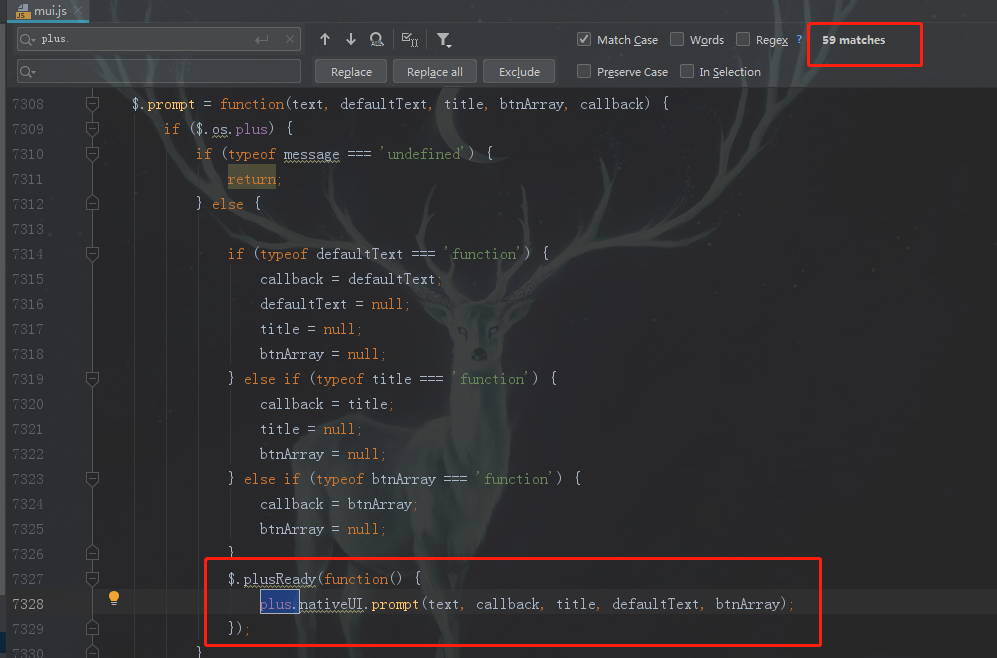
3、开发工具
使用HBuilderX开发工具写uni-app的代码,以及打包App等工作,主要的业务功能依旧是使用我们熟悉的idea开发,不过页面从webPC端风格改成了移动端风格
4、整体架构
我们采用uni-app + mui的方式,使用的是官方推荐的 uni-app原生标题栏跟导航栏 + 嵌入webview远程服务的页面,也就是说除了头部、尾部,中间的内容都是类似iframe嵌入进去

简单的说,uni-app,包括头部标题栏、底部导航栏作为App的“壳”,java后端+mui前端页面作为App的“内容”,这样选型的目的是为了方便后期的运维、升级
webview嵌入:直接升级后端服务并重新部署即可,无需重新打包、升级App
头尾使用原生组件:提升App流畅度
为方便以后查阅,特此记录
uni-app部分
我在App.vue中对uni对象进行全局赋值,这样在每个页面都调用到,这样做的目的是为了方便全局修改,比如全局该监听方法、后期需要换进度条样式、更换后端服务地址等
tabBar导航栏
底部的导航栏比较简单,在page.json进行配置就可以
page.json

{ "pages": [ //pages数组中第一项表示应用启动页 { "path": "pages/index/index", "style": { "navigationBarTitleText": "首页", "titleNView": { "buttons": [{ "type": "none", "float": "left" }, { "type": "none", "float": "right", "fontSrc":"/static/fonts/mui.ttf" }] } } } ], "globalStyle": { "navigationBarTextStyle": "black", "navigationBarTitleText": "", "navigationBarBackgroundColor": "#F8F8F8", "backgroundColor": "#F8F8F8", "backgroundColorTop": "#F4F5F6", "backgroundColorBottom": "#F4F5F6" }, "tabBar": { "color": "#7A7E83", "selectedColor": "#007AFF", //#007AFF 蓝色 #f07837 橙色 "borderStyle": "black", "backgroundColor": "#F8F8F8", "list": [{ "pagePath": "pages/index/index", "iconPath": "static/image/index/index_.png", "selectedIconPath": "static/image/index/index.png", "text": "首页" }], "position": "bottom" } }
监听标题栏按钮
设置进度条颜色
设置进度条颜色、监听webview的url变化判断是否需要标题栏按钮等操作全都在App.vue中进行,具体页面可以直接调用样式对象、监听方法
App.vue

<script> export default { onLaunch: function() { //应用加载后初始后端服务地址 uni.phoneServiceAddress = "http://qch2.vipgz2.idcfengye.com"; //为了方便App演示,这里开了一个内网穿透 //监听软键盘高度变化,隐藏或显示tabbar uni.onKeyboardHeightChange(res => { if (res.height > 0) { uni.hideTabBar(); } else { uni.showTabBar(); } }) //全局进度条样式 uni.webviewStyles = { progress: { color: '#007AFF' } }; //全局监听标题栏按钮 uni.listenTitleButton = function(thid) { let webView = thid.$mp.page.$getAppWebview(); //webView加载完成时触发,开始监听子对象的onloaded事件 webView.onloaded = function() { let wv = webView.children()[0]; //webView的子对象加载完成时触发 wv.onloaded = function() { let url = wv.getURL(); //判断是否显示返回按钮 if ( url.indexOf("hybrid/html/error.html") >= 0 || url.indexOf("/index/index") >= 0 || url.indexOf("/login/index") >= 0 ) { // console.log("标题栏隐藏返回按钮"); webView.setTitleNViewButtonStyle(0, { type: 'none' }); thid.backFun = function(object){} } else { // console.log("标题栏显示返回按钮"); webView.setTitleNViewButtonStyle(0, { type: 'back' }); thid.backFun = function(object){ if(object.index == 0){ //回退 uni.navigateBack(); } } } //因为我们手动设置了一些属性,导致标题栏的title不能自动获取、设置,这里需要我们手动设置一下 uni.setNavigationBarTitle({ title: wv.getTitle() }); } } //webView手动加载、便于触发方法 webView.loadURL(thid.url); } }, onShow: function() { }, onHide: function() { } } </script> <style> /*每个页面公共css */ </style>
index.vue

<!-- vue单文件组件 -->
<template>
<!-- 注意必须有一个view,且只能有一个根view。所有内容写在这个view下面 -->
<view class="main">
<!-- 直接嵌入页面 -->
<web-view id="webView" :src="url" :webview-styles="webviewStyles"></web-view>
</view>
</template>
<!-- js代码,es6语法 -->
<script>
//外部文件导入
import * as util from '../../common/js/util.js';
export default {
data() {
return {
//当前webview请求的url
url: uni.phoneServiceAddress + "/index/index",
//进度条颜色样式
webviewStyles: uni.webviewStyles,
//回退按钮事件,比如第一页是不需要回退按钮,点进去之后的页面才需要
backFun:function(object){}
}
},
//点击标题栏按钮,这里主要是用于回退按钮
onNavigationBarButtonTap:function(object){
this.backFun(object);
},
//页面装载完成,开始监听webview路径变化
onReady: function(options) {
console.log("onReady");
// #ifdef APP-PLUS
uni.listenTitleButton(this);
// #endif
},
onLoad: function(options) {
console.log("onLoad");
},
onShow: function(options) {
console.log("onShow");
},
// 点击导航栏,webview重新请求this.url
onTabItemTap: function(object) {
// #ifdef APP-PLUS
let wv = this.$mp.page.$getAppWebview().children()[0];
wv.loadURL(this.url);
// #endif
}
}
</script>
<!-- css样式代码 -->
<style>
/* css外部文件导入 */
@import "../../common/css/uni.css";
</style>
然后其他的页面跟首页差不多,只是this.url的路径不同,同时,如果标题栏还需要其他按钮(比如右边再来个分享、或者添加按钮),就再加一个按钮,然后操作不同的下标
配置错误页面


webview组件
webview组件介绍:https://uniapp.dcloud.io/component/web-view
webview网页与App的交互
1、webview调用uni-app的api,那几个路径的跳转都没有问题,postMessage说是在特定时机(后退、分享等)中才会触发,但是我一次都没有成功
需要注意:在webview网页中调uni-app的api或者是5+扩展规范,需要监听原生扩展的事件,等待plus ready
document.addEventListener('UniAppJSBridgeReady', function() {
uni.navigateTo({
url: 'page/index/index'
});
});
或者使用mui已经帮我们封装好了方法,所有的5+规范的api都可以调
mui.plusReady(function() { plus.nativeUI.toast("xxxxxxx"); });
2、uni-app调用webview网页的方法,可以直接在uni-app的代码里面使用5+规范中的webview对象的evaljs方法,将js代码发生到webview页面去执行,
api地址:http://www.html5plus.org/doc/zh_cn/webview.html#plus.webview.WebviewObject.evalJS,例如
plus.webview.currentWebview()[0].evalJS("alert('哈哈哈')");
webview页面就会弹出"哈哈哈"弹窗
但有一点要注意,比如在webview页面使用5+规范去操作uni-app原生标题栏按钮的回调事件中,我们发现,在回调方法的作用域可以访问到外面的对象,也可以是获取到dom文档里的标签、元素,但直接修改DOM文档发现时不起作用的,看文档才发现,原来webview的层级比里面的内容要高,这时候我们选择下面这样方案

mui.plusReady(function () { let webView = plus.webview.currentWebview(); //webView加载完成时触发,开始监听子对象的onloaded事件 webView.onloaded = function() { let wv = webView.children()[0]; //webView的子对象加载完成时触发 wv.onloaded = function () { /* 标题栏按钮 */ webView.setTitleNViewButtonStyle(1, { onclick: function (event) { // 将JS脚本发送到Webview窗口中运行,可用于实现Webview窗口间的数据通讯 wv.evalJS("show()"); } }); } } }); function show() { }
检查更新
2020-06-09更新
检查更新是App必不可少的功能,我们在App.vue的onLaunch方法中调用服务接口,查询是否有更新
App打包时,设置版本名称

如需升级,部署后台时

封装ajax.js

/** * 封装ajax请求 */ function request(params, method) { return new Promise(function(resolve, reject) { uni.request({ url: params.url, data: params.data, method: method, header: { "content-type": "application/x-www-form-urlencoded;charset=UTF-8", ...params.header }, success(res) { // 成功回调 if (res.statusCode == 200) { resolve(res.data) } else { reject(res) } }, fail(err) { uni.hideLoading() uni.showToast({ title: '服务器错误', icon: "none" }) reject(err) // 失败回调 }, complete() { uni.hideLoading() // 无论成功或失败 只要请求完成的 回调 } }) }) }; export default { get(params) { return request(params, "GET"); }, post(params) { return request(params, "POST") }, put(params) { return request(params, "PUT") }, }
引入ajax
import ajax from 'common/js/ajax.js';
查询接口,检查更新
//检查更新 ajax.get({ url: uni.phoneServiceAddress + "/update", //检查更新地址 data: { "ua": uni.getSystemInfoSync().platform,//获取ua标识 苹果 ios,安卓 android "versionByApp": plus.runtime.version //获取应用版本名称 } }).then(res => { if (res.status == "1") { //提醒用户更新 uni.showModal({ title: "更新提示", content: res.note, success: (res) => { if (res.confirm) { plus.runtime.openURL(res.url); } } }) } })
java接口
@Value("${version}")
private String versionByServer;//从配置文件中读取
/**
* 检查更新
*/
@GetMapping("update")
public String update(String ua,String versionByApp) {
//是否需要更新
String status = "0";
//新包地址
String url = "http://xxx.xxx.com/android.apk";
//更新内容
String note = "" +
"1、修复bug1;" +
"2、修复bug2;" +
"";
if(!versionByServer.equals(versionByApp)){
status = "1";
}
if("ios".equals(ua)){
url ="itms-apps://itunes.apple.com/cn/app/hello-uni-app/idxxxxxxx";
}
return "{"status":""+status+"","note":""+note+"","url":""+url+""}";
}
App防二次打包
2020-06-09更新
防二次打包只限于安卓App,主要通过校验应用签名,在App.vue的onLaunch方法中调用如下代码进行校验,签名异常则弹窗提示并强制退出
//如果是安卓运行环境,校验应用签名是否正确 if (plus.os.name == 'Android') { //校验 if (!checkApkSign("dd:xx:ff:dd:xx:dd:23:cc:di:x9")) { uni.showModal({ title: '提示', content: '签名异常,请下载安装正版APK包', showCancel: false, success: function(res) { if (res.confirm) { plus.runtime.quit(); } else if (res.cancel) { plus.runtime.quit(); } } }); } } /** * 通过SHA1,检查安卓APK签名 */ function checkApkSign(value) { //获取应用上下文 var context = plus.android.runtimeMainActivity(); var PackageManager = plus.android.importClass("android.content.pm.PackageManager"); var packageInfo = context.getPackageManager().getPackageInfo(context.getPackageName(), PackageManager.GET_SIGNING_CERTIFICATES || PackageManager.GET_SIGNATURES) var Build = plus.android.importClass("android.os.Build"); var signatures = null; //Android 28以后获取包签名信息方法改了 if (Build.VERSION.SDK_INT >= Build.VERSION_CODES.P) { var signingInfo = packageInfo.plusGetAttribute('signingInfo'); signatures = plus.android.invoke(signingInfo, "getApkContentsSigners") } else { signatures = packageInfo.plusGetAttribute('signatures'); } if (signatures != null) { var signature; var byteArr; var currentSignature;//当前App的SHA1值 var md = plus.android.invoke("java.security.MessageDigest", "getInstance", type); for (var i in signatures) { byteArr = plus.android.invoke(signatures[i], "toByteArray"); plus.android.invoke(md, "update", byteArr); currentSignature = Bytes2HexString(plus.android.invoke(md, "digest")).toUpperCase(); //调用方法转成16进制时没有拼接":",所以对比时value也要去掉 if (value.replace(/:/g,"").toUpperCase() == currentSignature) { return true; } } } else { console.info("应用未签名"); } return false; } //字节数组转十六进制字符串,对负值填坑 function Bytes2HexString(arrBytes) { var str = ""; for (var i = 0; i < arrBytes.length; i++) { var tmp; var num = arrBytes[i]; if (num < 0) { //此处填坑,当byte因为符合位导致数值为负时候,需要对数据进行处理 tmp = (255 + num + 1).toString(16); } else { tmp = num.toString(16); } if (tmp.length == 1) { tmp = "0" + tmp; } str += tmp; } return str; }
mui部分
项目工程结构就是我们之前熟悉的springboot + thymeleaf + springdata-jpa,开发起来除了页面风格(移动端)不同,其他的都还好
mui部分主要是业务页面、功能的开发,有时候也需要调用5+规范的api,比如调用手机相机、文件管理、系统通知等,需要用到的时候就看api:http://www.html5plus.org/doc/h5p.html
页面开发主要就参考mui的新手文档(https://dev.dcloud.net.cn/mui/getting-started/)、官网演示(https://www.dcloud.io/mui.html)、文档(https://dev.dcloud.net.cn/mui/ui/)等,同时也参考别人的App页面设计(QQ、微信、支付宝、京东等)
封装弹窗
比如类似京东他们的这种弹窗,我认为比较好看,比较具有通用性
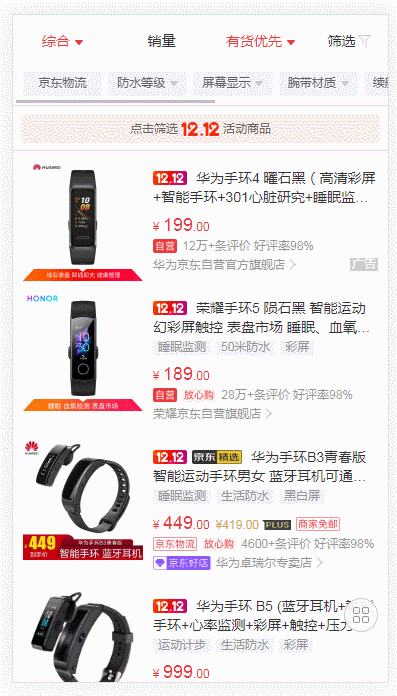
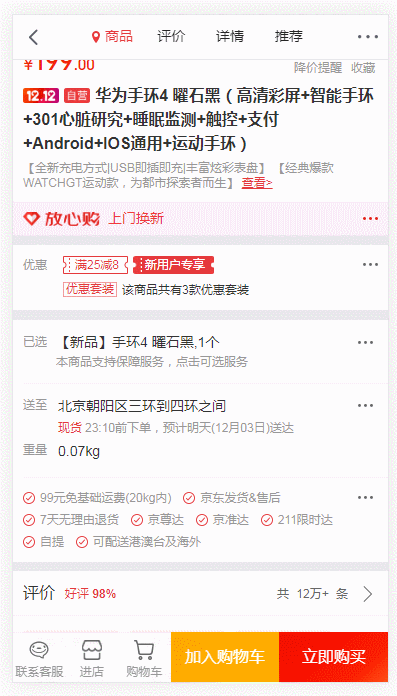
所以也基于mui封装了自己的一套弹窗效果
先看下演示
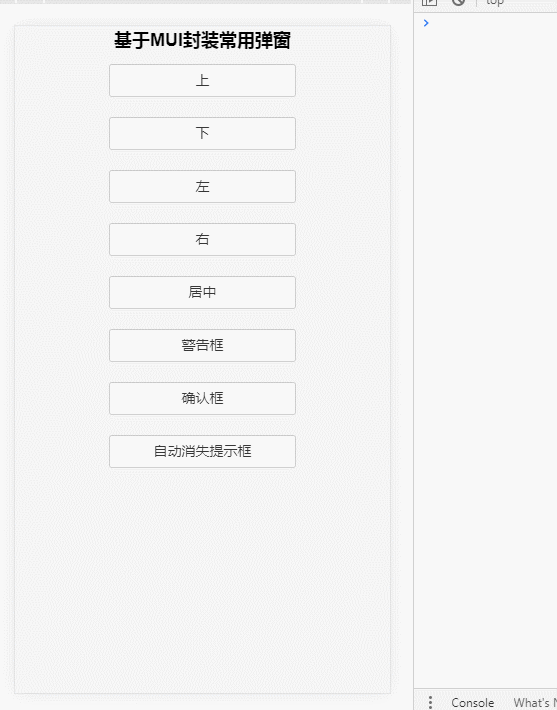
代码
css
封装在common.css中

/* 封装自定义弹窗 上右下左,居中 */ .huanzi-dialog { position: fixed; background-color: white; z-index: -1; overflow: hidden; } .huanzi-dialog-top { width: 100%; top: -100%; border-radius: 0 0 13px 13px; } .huanzi-dialog-right { width: 85%; top: 0; right: -85%; bottom: 0; border-radius: 13px 0 0 13px; } .huanzi-dialog-bottom { width: 100%; bottom: -100%; border-radius: 13px 13px 0 0; } .huanzi-dialog-left { width: 85%; top: 0; left: -85%; bottom: 0; border-radius: 0 13px 13px 0; } .huanzi-dialog-center { border-radius: 13px; opacity: 0; /* 方案一 */ /*margin: auto; left: 0; right: 0; bottom: 0; top: 0;*/ /* 方案二 */ top: 50%; left: 50%; transform: translate3d(-50%, -50%, 0) scale(1.185); }
js
封装在common.js中

/* 封装自定义弹窗 */ var HuanziDialog = { mask: null,//mui遮阴层对象 showSpeed: 300,//弹出速度 hideSpeed: 100,//隐藏速度 removeFlag: true,//close内部是否执行操作 /** * 隐藏弹窗,内部方法 * @param select jq元素选择器,#xxx、.xxx等,如果为空,则隐藏所有 * @param callback 回调方法 * @param speed 速度 */ hideFun: function (select, callback, speed) { let $huanziDialog = select ? $(select) : $(".huanzi-dialog"); speed = speed ? speed : HuanziDialog.hideSpeed; //上右下左,居中 $huanziDialog.each(function () { let dialog = $(this); let clazz = dialog.attr("class"); if (clazz.indexOf("huanzi-dialog-top") > -1) { dialog.animate({top: '-100%'}, speed); } else if (clazz.indexOf("huanzi-dialog-right") > -1) { dialog.animate({right: '-85%'}, speed); } else if (clazz.indexOf("huanzi-dialog-bottom") > -1) { dialog.animate({bottom: '-100%'}, speed); } else if (clazz.indexOf("huanzi-dialog-left") > -1) { dialog.animate({left: '-85%'}, speed); } else if (clazz.indexOf("huanzi-dialog-center") > -1) { dialog.animate({opacity: 0}, speed); } setTimeout(function () { dialog.css("z-index", "-1"); }, speed) }); callback && callback(); }, /** * 显示弹窗,内部方法 * @param select jq元素选择器,#xxx、.xxx等,如果为空,则显示所有 * @param callback 回调方法 * @param speed 速度 */ showFun: function (select, callback, speed) { let $huanziDialog = select ? $(select) : $(".huanzi-dialog"); speed = speed ? speed : HuanziDialog.hideSpeed; //上右下左,居中 $huanziDialog.each(function () { let dialog = $(this); dialog.css("z-index", "999"); let clazz = dialog.attr("class"); if (clazz.indexOf("huanzi-dialog-top") > -1) { dialog.animate({top: '0%'}, speed); } else if (clazz.indexOf("huanzi-dialog-right") > -1) { dialog.animate({right: '0%'}, speed); } else if (clazz.indexOf("huanzi-dialog-bottom") > -1) { dialog.animate({bottom: '0%'}, speed); } else if (clazz.indexOf("huanzi-dialog-left") > -1) { dialog.animate({left: '0%'}, speed); } else if (clazz.indexOf("huanzi-dialog-center") > -1) { dialog.animate({opacity: 1}, speed); } }); HuanziDialog.removeFlag = true; callback && callback(); }, /** * 初始化mui遮阴层对象 */ init: function () { HuanziDialog.mask = mui.createMask(); /** * 重写close方法 */ HuanziDialog.mask.close = function () { if (!HuanziDialog.removeFlag) { return; } //方法直接在这里执行 HuanziDialog.hideFun(); //调用删除 HuanziDialog.mask._remove(); }; }, /** * 显示弹窗,供外部调用(参数同内部方法一致) */ show: function (select, callback, speed) { HuanziDialog.showFun(select, callback, speed); HuanziDialog.mask.show();//显示遮罩 }, /** * 隐藏弹窗,供外部调用(参数同内部方法一致) */ hide: function (select, callback, speed) { HuanziDialog.hideFun(select, callback, speed); HuanziDialog.mask.close();//关闭遮罩 }, /** * 警告框 * @param title 标题 * @param message 内容 * @param callback 点击确认的回调 */ alert: function (title, message, callback) { let $html = $("<div class="mui-popup mui-popup-in" style="display: block;">" + "<div class="mui-popup-inner">" + " <div class="mui-popup-title">" + title + "</div>" + " <div class="mui-popup-text">" + message + "</div>" + "</div>" + "<div class="mui-popup-buttons">" + "<span class="mui-popup-button mui-popup-button-bold confirm-but">确定</span>" + "</div>" + "</div>"); $html.find(".confirm-but").click(function () { HuanziDialog.removeFlag = true; HuanziDialog.mask.close(); $html.remove(); callback && callback(); }); HuanziDialog.mask.show();//显示遮罩 HuanziDialog.removeFlag = false; $("body").append($html); }, /** * 确认消息框 * @param title 标题 * @param message 内容 * @param callback 点击确认的回调 */ confirm: function (title, message, callback) { let $html = $("<div class="mui-popup mui-popup-in" style="display: block;">" + "<div class="mui-popup-inner">" + " <div class="mui-popup-title">" + title + "</div>" + " <div class="mui-popup-text">" + message + "</div>" + "</div>" + "<div class="mui-popup-buttons">" + "<span class="mui-popup-button mui-popup-button-bold cancel-but" style='color: #585858;'>取消</span>" + "<span class="mui-popup-button mui-popup-button-bold confirm-but">确定</span>" + "</div>" + "</div>"); $html.find(".cancel-but").click(function () { HuanziDialog.removeFlag = true; HuanziDialog.mask.close(); $html.remove(); }); $html.find(".confirm-but").click(function () { $html.find(".cancel-but").click(); callback && callback(); }); HuanziDialog.mask.show();//显示遮罩 HuanziDialog.removeFlag = false; $("body").append($html); }, /** * 自动消失提示弹窗 * @param message 内容 * @param speed 存在时间 */ toast: function (message, speed) { speed = speed ? speed : 2000; let $html = $("<div class="huanzi-dialog huanzi-dialog-center" style=" 45%;height: 20%;opacity: 1;z-index: 999;background-color: #5a5a5ad1;">" + " <p style=" position: relative; top: 50%; left: 50%; transform: translate3d(-50%, -50%, 0) scale(1); color: #e0e0e0; font-size: 20px; ">" + message + "</p>" + "</div>"); $("body").append($html); setTimeout(function () { $html.remove(); }, speed); } }; //先初始化自定义弹窗 HuanziDialog.init();
html
测试页面

<!DOCTYPE html> <html xmlns:th="http://www.thymeleaf.org"> <head> <meta charset="UTF-8"> <meta name="viewport" content="width=device-width, initial-scale=1"> <title>基于MUI封装常用弹窗</title> <!-- jquery --> <script th:src="@{/webjars/jquery/3.1.1/jquery.min.js}"></script> <!-- 引入mui框架 --> <link rel='stylesheet' th:href="@{/common/mui/css/mui.css}"/> <script th:src="@{/common/mui/js/mui.js}"></script> <!-- 最后引入公用代码 --> <link rel='stylesheet' th:href="@{/common/common.css}"/> <script th:src="@{/common/common.js}"></script> <style> body{ text-align: center; } .mui-btn{ width: 50%; margin: 10px auto; } </style> </head> <body> <h4>基于MUI封装常用弹窗</h4> <button class="mui-btn" onclick="HuanziDialog.show('#top')">上</button> <button class="mui-btn" onclick="HuanziDialog.show('#bottom')">下</button> <button class="mui-btn" onclick="HuanziDialog.show('#left')">左</button> <button class="mui-btn" onclick="HuanziDialog.show('#right')">右</button> <button class="mui-btn" onclick="HuanziDialog.show('#center')">居中</button> <button class="mui-btn" onclick="HuanziDialog.alert('系统提示','我是警告框!',function() {console.log('你已确认警告!')})">警告框</button> <button class="mui-btn" onclick="HuanziDialog.confirm('系统提示','确认要XXX吗?',function() {HuanziDialog.toast('很好,你点击了确认!');console.log('很好,你点击了确认!')})">确认框</button> <button class="mui-btn" onclick="HuanziDialog.toast('提交成功')">自动消失提示框</button> <!-- 上 --> <div id="top" class="huanzi-dialog huanzi-dialog-top" style="height: 500px"> <h5>我从上边弹出</h5> </div> <!-- 下 --> <div id="bottom" class="huanzi-dialog huanzi-dialog-bottom" style="height: 500px"> <h5>我从下边弹出</h5> </div> <!-- 左 --> <div id="left" class="huanzi-dialog huanzi-dialog-left"> <h5>我从左边弹出</h5> </div> <!-- 右 --> <div id="right" class="huanzi-dialog huanzi-dialog-right"> <h5>我从右边弹出</h5> </div> <!-- 居中 --> <div id="center" class="huanzi-dialog huanzi-dialog-center" style=" 65%;height: 30%"> <h5>我从中间弹出</h5> </div> </body> </html>
其实后面的警告框、确认框的样式就是mui的5+端样式,那我们为什么还要封装呢?在开发中我们发现,在PS端浏览器将调试模式改成手机端,mui的封装的弹窗是上面的效果,但到真机上运行它又变成原生的弹窗样式,原来mui底层有进行了判断,安卓、苹果、5+等样式都不一样,这里我们为了弹窗风格的统一,同时也是为了方便后期的统一调整,因此再进行了一层封装
封装头部尾部
这里的封装其实就是文末补充的另一种方案,基于mui的标题栏、底部导航栏,进行简单封装
common.css

/* 自定义头部,系统状态栏的高度暂时写死30px */ .huanzi-header{ position: fixed; top:0; right: 0; left: 0; background-image: linear-gradient(to bottom right, #0061ff, #6aa2ff); box-shadow: 0 1px 6px #ccc; height: 74px; } .huanzi-header .statusbar { height: 30px; width: 100%; } .huanzi-header .titlebar{ padding-right: 10px; padding-left: 10px; border-bottom: 0; } .huanzi-header .titlebar a { margin: 15px 5px; } .huanzi-header .titlebar * { color: white; } .huanzi-header .mui-title{ line-height: 55px !important; right: 100px; left: 100px; display: inline-block; overflow: hidden; width: auto; margin: 0; text-overflow: ellipsis; } .huanzi-content { position: absolute; top: 74px; bottom: 50px; } /* 自定义页脚(底部导航栏) */ .huanzi-footer{ position: fixed; right: 0; left: 0; bottom: 0; background-color: white; box-shadow: 0 1px 6px #ccc; height: 50px; padding: 5px; } .huanzi-footer .huanzi-footer-buttom{ height: 50px; float: left; color: black; /* 宽度为:100/按钮个数 */ width: 25%; } .huanzi-footer .huanzi-footer-buttom > p{ color: black; } .huanzi-footer .select{ color: #0091fb; } .huanzi-footer .select > p{ color: #0091fb; }
common.js

//底部按钮点击切换颜色 $(document).on("click",".huanzi-footer-buttom", function (e) { $(".huanzi-footer-buttom").each(function () { $(this).removeClass("select"); }); $(this).addClass("select"); });
自定义弹窗例子
需要在head.html中引入jquery、mui、common的js、css

<!DOCTYPE html> <html xmlns:th="http://www.thymeleaf.org"> <head> <meta charset="UTF-8"> <meta name="viewport" content="width=device-width, initial-scale=1"> <title>基于MUI封装常用弹窗</title> <script th:replace="common/head::static"></script> <style> body{ text-align: center; } .mui-btn{ width: 50%; margin: 10px auto; } </style> </head> <body> <!-- 头部 --> <header class="huanzi-header"> <div class="statusbar"></div> <div class="titlebar"> <a class="mui-action-back mui-icon mui-icon-left-nav mui-pull-left"></a> <h1 class="mui-title">基于MUI封装常用弹窗</h1> <a class="mui-icon mui-icon-bars mui-pull-right"></a> </div> </header> <!-- 内容(可滑动区域) --> <div class="huanzi-content mui-scroll-wrapper"> <div class=" mui-scroll"> <button class="mui-btn" onclick="HuanziDialog.show('#top')">上</button> <button class="mui-btn" onclick="HuanziDialog.show('#bottom')">下</button> <button class="mui-btn" onclick="HuanziDialog.show('#left')">左</button> <button class="mui-btn" onclick="HuanziDialog.show('#right')">右</button> <button class="mui-btn" onclick="HuanziDialog.show('#center')">居中</button> <button class="mui-btn" onclick="HuanziDialog.alert('系统提示','我是警告框!',function() {console.log('你已确认警告!')})">警告框</button> <button class="mui-btn" onclick="HuanziDialog.confirm('系统提示','确认要XXX吗?',function() {HuanziDialog.toast('你点击了确认!');console.log('很好,你点击了确认!')})">确认框</button> <button class="mui-btn" onclick="HuanziDialog.toast('提交成功')">自动消失提示框</button> <button class="mui-btn">无用按钮</button> <button class="mui-btn">无用按钮</button> <button class="mui-btn">无用按钮</button> <button class="mui-btn">无用按钮</button> <button class="mui-btn">无用按钮</button> <button class="mui-btn">无用按钮</button> <button class="mui-btn">无用按钮</button> </div> </div> <!-- 例如弹窗等内容,需要放在外面 --> <div> <!-- 上 --> <div id="top" class="huanzi-dialog huanzi-dialog-top" style="height: 500px"> <h5>我从上边弹出</h5> </div> <!-- 下 --> <div id="bottom" class="huanzi-dialog huanzi-dialog-bottom" style="height: 500px"> <h5>我从下边弹出</h5> </div> <!-- 左 --> <div id="left" class="huanzi-dialog huanzi-dialog-left"> <h5>我从左边弹出</h5> </div> <!-- 右 --> <div id="right" class="huanzi-dialog huanzi-dialog-right"> <h5>我从右边弹出</h5> </div> <!-- 居中 --> <div id="center" class="huanzi-dialog huanzi-dialog-center" style=" 65%;height: 30%"> <h5>我从中间弹出</h5> </div> </div> <!-- 底部导航栏 --> <footer class="huanzi-footer"> <div class="huanzi-footer-buttom select"> <i class="mui-icon mui-icon-phone"></i> <p>电话</p> </div> <div class="huanzi-footer-buttom"> <i class="mui-icon mui-icon-email"></i> <p>邮件</p> </div> <div class="huanzi-footer-buttom"> <i class="mui-icon mui-icon-chatbubble"></i> <p>短信</p> </div> <div class="huanzi-footer-buttom"> <i class="mui-icon mui-icon-weixin"></i> <p>微信</p> </div> </footer> </body> </html>
效果演示

2020-03-04更新
问题:按照前面的想法,我们每个页面都要加入头部、尾部,但这样跳转页面时会造成“白屏”的情况,严重影响浏览效果
解决办法:我们创建一个main主页面,只有主页面有头部、尾部,中间内容嵌入iframe内容子页面(子页面正常html页面),如果在当前页面进行跳转操作,也是在iframe中进行跳转,而如果点击尾部按钮切换模块、页面,那就切换iframe标签的src进行更新url,这样我们在跳转页面时,头部、尾部都不会刷新,浏览效果更佳,而且还可以减少重复代码
common.js
其他的都不变,尾部按钮点击事件需要修改一下,同时加入iframe标签的load事件处理
//省略其他内容 //底部按钮点击事件 $(document).on("click", ".huanzi-footer-buttom", function (e) { //iframe跳转新页面 $("#mainIframe")[0].src = ctx + $(this).data("url"); //切换颜色 $(".huanzi-footer-buttom").each(function () { $(this).removeClass("select"); }); $(this).addClass("select"); }); //mainIframe onload事件 function mainIframeLoadFun(mainIframe) { //自适应高度 mainIframe.height = $('.huanzi-content')[0].scrollHeight; //修改标题 //子页面与父页面同源获取方法 // let title = document.getElementById('mainIframe').contentWindow.document.title;//iframe中子页面的title let $mainFrame=$('#mainIframe'); let title = $mainFrame.contents().attr("title"); $("title").text(title); $(".mui-title").text(title); }
main.html
主页面,主要分为头部、中间内容、尾部,中间内容改成iframe标签,在onload事件中进行高度自适应
<!DOCTYPE html> <html xmlns:th="http://www.thymeleaf.org"> <head> <meta charset="UTF-8"> <meta name="viewport" content="width=device-width, initial-scale=1"> <title></title> <script th:replace="common/head::static"></script> <style> body{ text-align: center; } </style> </head> <body> <!-- 头部 --> <header class="huanzi-header"> <div class="statusbar"></div> <div class="titlebar"> <a class="mui-action-back mui-icon mui-icon-left-nav mui-pull-left"></a> <h1 class="mui-title"></h1> <a class="mui-icon mui-icon-bars mui-pull-right"></a> </div> </header> <!-- 内容(可滑动区域) --> <div class="huanzi-content mui-scroll-wrapper"> <div class=" mui-scroll"> <!-- 直接嵌入iframe,且自适应宽高 --> <iframe id="mainIframe" src="/test1" width="100%" onload="mainIframeLoadFun(this)"></iframe> </div> </div> <!-- 底部导航栏 --> <footer class="huanzi-footer"> <div class="huanzi-footer-buttom select" data-url="/test1"> <i class="mui-icon mui-icon-phone"></i> <p>页面1</p> </div> <div class="huanzi-footer-buttom" data-url="/test2"> <i class="mui-icon mui-icon-email"></i> <p>页面2</p> </div> <div class="huanzi-footer-buttom" data-url="/test3"> <i class="mui-icon mui-icon-chatbubble"></i> <p>页面3</p> </div> <div class="huanzi-footer-buttom" data-url="/test4"> <i class="mui-icon mui-icon-weixin"></i> <p>页面4</p> </div> </footer> </body> </html>
test1.html - test5.html(这几个页面内容都差不多,贴出一个就可以了,不同的是里面的值,还有就是test4.html页面里面有个跳转test5.html的按钮)
<!DOCTYPE html> <html xmlns:th="http://www.thymeleaf.org"> <head> <meta charset="UTF-8"> <meta name="viewport" content="width=device-width, initial-scale=1"> <title>页面4</title> <script th:replace="common/head::static"></script> <style> body{ text-align: center; } </style> </head> <body> <button class="mui-btn" onclick="window.location.href = ctx + '/test5'">跳转页面5</button> <h1>页面4</h1> <h1>页面4</h1> <h1>页面4</h1> <h1>页面4</h1> <h1>页面4</h1> <h1>页面4</h1> <h1>页面4</h1> <h1>页面4</h1> <h1>页面4</h1> <h1>页面4</h1> <h1>页面4</h1> <h1>页面4</h1> <h1>页面4</h1> <h1>页面4</h1> <h1>页面4</h1> <h1>页面4</h1> <h1>页面4</h1> <h1>页面4</h1> <h1>页面4</h1> <h1>页面4</h1> <h1>页面4</h1> <h1>页面4</h1> <h1>页面4</h1> <h1>页面4</h1> <h1>页面4</h1> <h1>页面4</h1> <h1>页面4</h1> <h1>页面4</h1> <h1>页面4</h1> <h1>页面4</h1> <h1>页面4</h1> <h1>页面4</h1> <h1>页面4</h1> <h1>页面4</h1> <h1>页面4</h1> <h1>页面4</h1> <h1>页面4</h1> <h1>页面4</h1> <h1>页面4</h1> <h1>页面4</h1> <h1>页面4</h1> <h1>页面4</h1> <h1>页面4</h1> <h1>页面4</h1> <h1>页面4</h1> <h1>页面4</h1> <h1>页面4</h1> <h1>页面4</h1> <h1>页面4</h1> </body> </html>
controller
控制器控制页面跳转(代码几乎一模一样,我就只贴一个就好了)
//跳转主页面 @GetMapping("main") public ModelAndView main() { ModelAndView modelAndView = new ModelAndView(); modelAndView.setViewName("main"); return modelAndView; }
效果演示
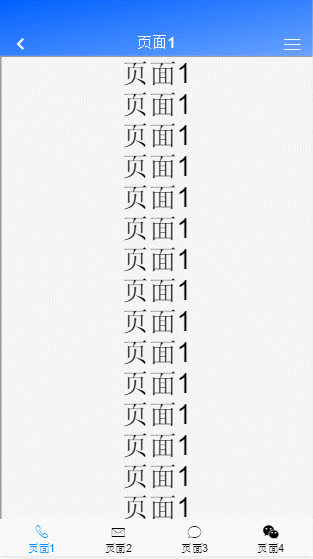
App调试、打包
运行 -> 运行到手机或模拟器
需要安装个模拟器(我的是雷电)、或者直接用USB数据先连接进行调试(PS:我的模拟器连接经常会断开,不知道是什么回事,有时候调试调试着就断开了,检查了也没有其他应用占用adb)
App打包是在:发行 - > 原生App-云打包
开发阶段,使用Dcloud公司的公用证书云打包就可以了,正式上线就需要自己的证书去打包
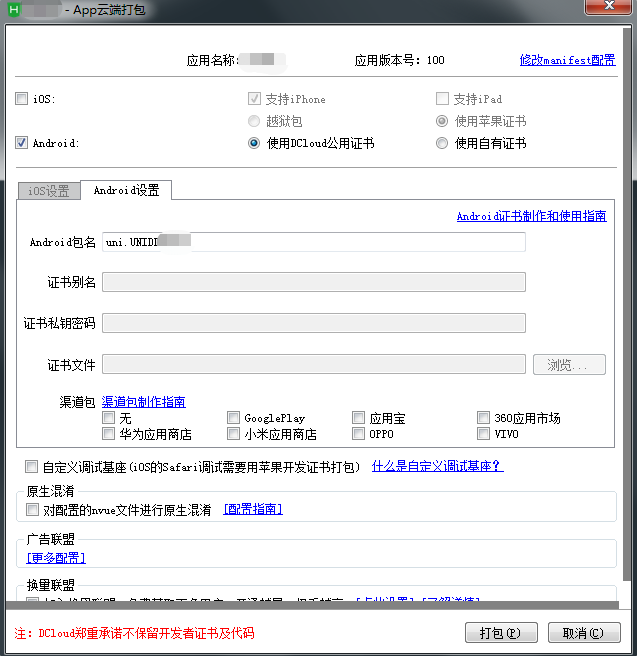
打包成功后控制台就会返回下载链接
后记
移动端App uni-app + mui 开发暂时先记录到这,后续再补充;由于是公司的App,就不方便演示,等有空了再做个demo把完整的一套东西再做完整演示;
另一种方案
虽然官方推荐尽量使用原生导航。甚至有时需要牺牲一些不是很重要的需求。但有时候我们就是想自定义原生标题栏,特别是我们是webview嵌入的方式
"globalStyle": { //隐藏原生标题栏,主意事项请查阅官网:https://uniapp.dcloud.io/collocation/pages?id=customnav "navigationStyle":"custom" },
如果要自定义导航栏,有哪些主要的点,官方在这里已经说得很清楚了:https://uniapp.dcloud.io/collocation/pages?id=customnav,但如果我们采用的是webview嵌入的方式,就要注意了,<web-view> 组件默认铺满全屏并且层级高于前端组件,如果我们按照文档中操作,发现还是会顶到系统状态栏
因此占高div我们最好也写在webview里面,系统状态栏的高度可以动态获取:http://www.html5plus.org/doc/zh_cn/navigator.html#plus.navigator.getStatusbarHeight
mui.plusReady(function(){ //获取系统状态栏的高度,单位为像素(px),值为Webview中的逻辑高度单位 let statusbarHeight = plus.navigator.getStatusbarHeight(); alert(statusbarHeight) });
自己写标题栏的话可以直接用mui的这个,或者基于它,我们自己再封装一个自己的标题栏
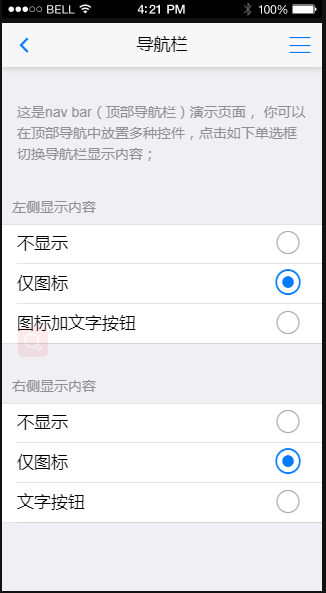
但是这样对代码的书写规范有一定的要求,页面统一分为头部、内容、尾部,中间的内容是可滑动区域,例如:
<body> <!-- 头部 --> <header id="header" class="mui-bar mui-bar-nav"> <!-- 系统状态栏占高div --> <div></div> <a class="mui-action-back mui-icon mui-icon-left-nav mui-pull-left"></a> <h1 class="mui-title">头部导航栏</h1> <a class="mui-icon mui-icon-bars mui-pull-right"></a> </header> <!-- 内容(可滑动区域) --> <div class="mui-scroll-wrapper"> <div class=" mui-scroll"> <p>这里是内容</p> </div> </div> <!-- 底部(如有需要,可扩展尾部导航栏) --> </body>
当然,我们可以进行统一封装,使用thymeleaf的替换,或者使用js去追加,这样可以减少每个页面的代码量,方便维护,但是视觉上就会有闪烁效果,因为每个页面的头部可能不一样,需要用js去追加,这个就需要权衡利弊选择合适的方式
注:封装代码在前面mui封装部分
补充
2020-02-25补充:自定义tabbar + webview解决方案
uniapp原生头尾+webview组合,底部的TabBar按钮需要根据登录角色的权限来动态控制数量,但目前官方并不支持动态修改TabBar隐藏或显示某一项,因此我们选用uniapp自定义TabBar实现(用的是这个插件:自定义动态TabBar;图片上传七牛云、阿里OSS;),同时配合Storage模块(http://www.html5plus.org/doc/zh_cn/storage.html)在webview页面进行存储登录角色权限,登录成功后跳转uniapp固定页面,进行读取判断动态控制tabbar
但webview组件默认全屏显示,会覆盖底部的tabbar按钮,而且webview组件的webview-styles并不支持设置高度,需要使用APP扩展插件5+plus来控制(http://www.html5plus.org/doc/zh_cn/webview.html),但当我们调用setStyle设置百分比高度发现并没有生效,原因不明,很奇怪
无奈,只能用5+plus动态创建webview组件,创建时传入style样式控制高度,这样就解决自定义tabbar按钮被覆盖的问题
//动态创建,控制高度 var w=plus.webview.create(this.url,'index',{height:'93%'}); w.show();
2020-06-09更新
我们已经尝试过了以下三种方案
1、原生标题栏 + 原生tabbar
2、自定义标题栏(webview) + 原生tabbar
3、自定义标题栏(webview) + 自定义tabbar(uniapp)
但我们有时就是想整个页面都是从服务端返回,包括标题栏、tabbar,即自定义标题栏(webview)+ 自定义tabbar(webview),详情请看另一篇博客:SpringBoot系列——基于mui的H5套壳APP开发web框架
iOS上架App Store
Android的打好apk包后我们可以随便安装,但iOS的ipa却不行,除了测试证书打的测试包,并且是添加过UUID的手机才能安装测试包,用发布证书打的ipa包是不能直接安装的,只能通过App Store安装
下面简单记录一下iOS打包、发布流程,没有苹果电脑,可以用这个Appuploader工具来生成证书、以及上传ipa:http://blog.applicationloader.net/blog/zh/72.html
1、iOS证书(.p12)和描述文件(.mobileprovision)、以及发布推送证书申请(账号权限要有证书相关权限,具体步骤查看官网文档:https://ask.dcloud.net.cn/article/152)
2、使用发布证书云打包ipa
3、在iTunes Connect创建APP,上传ipa(账号要有管理App权限)
4、设置APP各项信息提交审核(上传过程可以先设置App信息)
(2019最详细iOS APP上架App Store流程:https://www.jianshu.com/p/6f50130b6950)
注意点:
1、App图标有要求,提供的app store图标需要是png图片,且不透明即没有alpha,(修改后按点击“自动生成所有图标并替换”重新生成应用图标,并重新打包上传,记得改版本号,不改上传不了)
2、要在manifest.json配置隐私权限

3、如果App没有注册功能,一定要说明没有注册功能的原因,让审核人员相信不是内部应用,并提供测试账号
4、App截图也不能忽略,打测试包在不同机型的真机上安装进行截图,最后让美工PS一下,类似这样
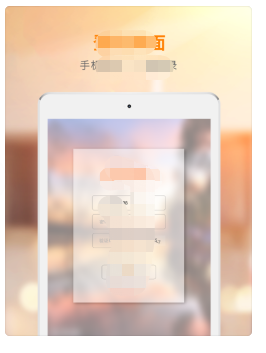
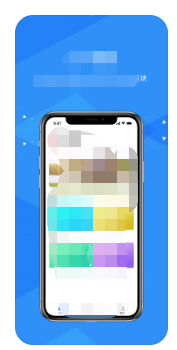
代码开源
代码已经开源、托管到我的GitHub、码云:
